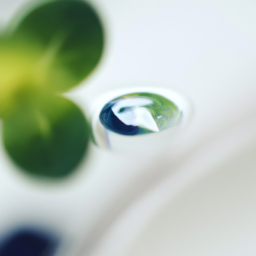
The Importance of Choosing the Right Plants for Water Conservation
Water conservation is a critical aspect of sustainable living, especially in regions facing water scarcity or drought conditions. One effective way to conserve water in our gardens and landscapes is by carefully selecting and planting the right plants. By choosing plants that are well-suited to your local climate and soil conditions, you can significantly reduce water usage without compromising the beauty and functionality of your outdoor spaces. In this article, we will explore the importance of choosing the right plants for water conservation and provide you with a step-by-step guide on how to do so.
Understanding the Water Needs of Plants
Before diving into the process of selecting water-efficient plants, it’s crucial to understand the water needs of different plant species. Plants have varying levels of water requirements, and grouping them based on their water needs can help you create a more efficient watering schedule and minimize water wastage.
Some plants, known as drought-tolerant or xerophytic plants, have evolved to survive in arid conditions and require minimal watering. These plants typically have adaptations like deep root systems, succulent leaves, or waxy coatings that help them retain moisture. On the other hand, water-loving plants, also known as hydric plants, thrive in moist or wet environments and need regular watering to stay healthy.
By understanding the water needs of different plants, you can strategically design your garden or landscape by grouping plants with similar water requirements together. This practice, known as hydrozoning, allows you to create separate irrigation zones and apply water more efficiently, ensuring that each plant receives the appropriate amount of water without overwatering or underwatering.
Selecting Water-Efficient Plants
To conserve water effectively, it is essential to choose plants that are well-suited to your local climate and soil conditions. Native plants are often the best choice as they have adapted to the local environment over time and require minimal supplemental watering once established. Native plants are also more resistant to pests and diseases, reducing the need for chemical interventions.
When selecting water-efficient plants, consider the following factors:
1. Climate: Choose plants that are native or well-adapted to your region’s climate. Native plants are already acclimated to the rainfall patterns and temperature fluctuations of your area, making them more water-efficient choices.
2. Soil type: Different plants have different soil preferences. Understanding your soil type, whether it’s sandy, loamy, or clayey, will help you select plants that can thrive in those conditions. Soil with good drainage is crucial for preventing waterlogging and root rot.
3. Sun exposure: Assess the amount of sunlight your garden receives throughout the day. Full sun, partial shade, or full shade conditions will influence your plant choices. Some plants thrive in direct sunlight, while others prefer more shade.
4. Plant size and growth rate: Consider the ultimate size of the plants you choose. Planting large trees or shrubs near water-sensitive areas like foundations or underground pipes can lead to water-related issues in the future. Opt for slow-growing or smaller-sized plants to minimize the need for pruning and maintenance.
5. Water requirements: Research the specific water needs of each plant species before making your selection. Look for plants that have low to moderate water requirements, especially if you live in an area with limited water resources or face water restrictions.
By taking these factors into account, you can create a diverse and visually appealing landscape that thrives with minimal water usage.
Planting and Caring for Water-Efficient Plants
Once you have selected the right water-efficient plants for your garden, it’s essential to follow proper planting and care practices to ensure their success. Here are some guidelines to help you:
1. Prepare the soil: Before planting, prepare the soil by loosening it and adding organic matter like compost or well-rotted manure. This improves soil structure, drainage, and water-holding capacity, reducing the need for frequent watering.
2. Mulch: Apply a layer of organic mulch around your plants to help retain soil moisture, suppress weed growth, and regulate soil temperature. Mulching also prevents evaporation, reducing the frequency of watering.
3. Water deeply and infrequently: When watering, aim for deep root penetration rather than shallow, frequent watering. Deep watering encourages plants to develop deep root systems, making them more resilient during dry periods. Avoid overwatering, as it can lead to water runoff and wastage.
4. Use efficient irrigation methods: Consider using irrigation methods like drip irrigation or soaker hoses that deliver water directly to the plant’s root zone, minimizing water loss through evaporation or runoff. Install a rainwater harvesting system to collect and reuse rainwater for irrigation purposes.
5. Monitor and adjust: Regularly monitor the moisture levels of your plants’ root zones. Adjust your watering schedule based on weather conditions, plant growth, and seasonal requirements. Installing a rain sensor or using a smart irrigation controller can help automate this process.
By following these planting and care practices, you can establish a water-efficient garden that not only conserves water but also supports a thriving ecosystem of beneficial insects, birds, and other wildlife.
In conclusion, choosing the right plants for water conservation is crucial for sustainable gardening and landscaping. By understanding the water needs of plants, selecting water-efficient species, and implementing proper planting and care practices, you can create a beautiful and eco-friendly outdoor space that minimizes water usage and contributes to a more sustainable future.
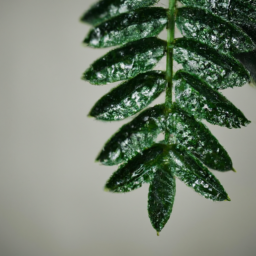
How to Select Drought-Tolerant Plants for Water-Scarce Areas
Welcome to this comprehensive guide on selecting drought-tolerant plants for water-scarce areas. In this article, we will explore the importance of choosing the right plants that can thrive with minimal water requirements. Whether you are a gardener, landscaper, or simply someone interested in sustainable gardening practices, this guide will provide you with valuable insights and practical tips to create a beautiful and water-efficient landscape.
The Importance of Drought-Tolerant Plants
Drought-tolerant plants are essential for water-scarce areas as they can survive and even thrive in conditions where water availability is limited. By choosing these plants, you can significantly reduce your water consumption for gardening purposes, conserve natural resources, and contribute to a more sustainable environment. Additionally, drought-tolerant plants often require less maintenance and are more resistant to pests and diseases, making them an excellent choice for any garden.
When selecting drought-tolerant plants, it’s crucial to consider the specific climate, soil conditions, and available sunlight in your area. By understanding these factors, you can choose plants that are best suited for your particular environment, ensuring their long-term success.
Factors to Consider when Choosing Drought-Tolerant Plants
1. Climate Adaptation:
Each plant species has different climate requirements. Some plants thrive in hot and arid climates, while others prefer cooler and more humid conditions. Research and identify plants that are native or well-adapted to your region’s climate. Native plants are often the best choice as they have evolved to withstand local weather patterns and are more likely to thrive with minimal water.
Consider the average temperature range, rainfall patterns, and seasonal variations in your area. This information will help you select plants that can endure the specific climatic challenges of your region.
2. Soil Conditions:
Soil plays a vital role in the growth and development of plants. Understanding your soil type is crucial when choosing drought-tolerant plants. Some plants prefer well-drained sandy soils, while others thrive in clay or loamy soils. Conduct a soil test to determine its pH level, texture, and nutrient content. This will guide you in selecting plants that are compatible with your soil conditions.
Amending the soil with organic matter, such as compost or mulch, can improve its water-holding capacity and nutrient content, creating a more favorable environment for drought-tolerant plants.
3. Water Requirements:
Although drought-tolerant plants can survive with less water, it’s important to understand their specific water requirements. Some plants may still need regular watering during their establishment phase or in extreme drought conditions. Research the water needs of each plant species you are considering and group plants with similar water requirements together. This will allow you to efficiently manage your watering schedule and conserve water.
Consider using irrigation techniques like drip irrigation or soaker hoses, which deliver water directly to the plant roots, minimizing evaporation and water waste.
Choosing the Right Drought-Tolerant Plants
Now that you understand the importance of drought-tolerant plants and the factors to consider, let’s explore some popular options:
1. Succulents and Cacti:
Succulents and cacti are excellent choices for water-scarce areas. They have adapted to store water in their leaves, stems, or roots, allowing them to survive in arid conditions. These plants come in various shapes, sizes, and colors, adding visual interest to your landscape.
Popular succulent varieties include Aloe vera, Agave, and Echeveria, while cacti species like Opuntia and Echinocactus are well-suited for dry climates.
2. Mediterranean Plants:
Mediterranean plants are known for their ability to thrive in hot and dry climates. They are often characterized by aromatic foliage, vibrant flowers, and low water requirements. Some popular Mediterranean plants include Lavender, Rosemary, and Sage. These plants not only add beauty to your garden but also attract pollinators like bees and butterflies.
3. Native Grasses and Wildflowers:
Native grasses and wildflowers are well-adapted to local climates and can survive with minimal water. They require less maintenance and provide habitat and food for local wildlife. Research native grasses and wildflowers in your region and incorporate them into your landscape for a natural and sustainable touch.
Remember, selecting drought-tolerant plants is just the first step. Proper planting techniques, mulching, and regular monitoring are essential for their long-term success. By choosing the right plants and implementing water-efficient practices, you can create a beautiful, sustainable, and resilient garden even in water-scarce areas.
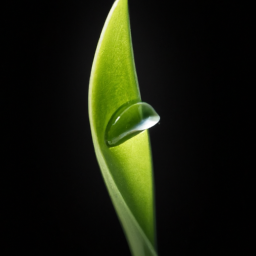
Best Plant Choices for Water Gardens and Aquatic Landscapes
Welcome to our comprehensive guide on the best plant choices for water gardens and aquatic landscapes. Whether you are a seasoned gardener or just starting out, creating a beautiful aquatic garden can be a rewarding and relaxing experience. In this article, we will explore the top plant choices that thrive in water environments, providing you with a step-by-step guide to enhance your water garden’s beauty and ecosystem.
1. Water Lilies
Water lilies are undoubtedly the stars of any water garden. With their stunning blooms and floating leaves, they add a touch of elegance to any aquatic landscape. These aquatic plants come in various colors, including white, pink, yellow, and red, allowing you to create a vibrant and visually appealing display.
When selecting water lilies for your garden, consider their growth habit. Hardy water lilies are perfect for colder climates as they can withstand freezing temperatures, while tropical water lilies thrive in warmer regions. Ensure that the water depth in your pond is suitable for the particular variety you choose, as some water lilies prefer deeper water.
Plant your water lilies in large containers filled with aquatic soil and place them at the appropriate depth in your pond. Regularly fertilize them during the growing season to promote healthy growth and abundant blooms. Remember to remove any faded flowers or leaves to maintain the overall aesthetics of your water garden.
2. Lotus
Lotus plants are iconic symbols of beauty and serenity, making them a popular choice for water gardens. These magnificent plants produce large, showy flowers that range in color from white and pink to vibrant red and yellow. Their unique seed pods also add visual interest to your aquatic landscape.
Before planting lotus in your water garden, ensure that you have a spacious area as they require ample room to spread their leaves and blooms. Choose a sunny spot in your pond, as lotus plants thrive in full sun. The water depth should be around 6 to 18 inches, allowing the lotus to grow and bloom successfully.
Plant your lotus tubers in wide containers filled with a mix of loam and clay soil. Place them carefully, ensuring that the growth tips are facing up. As the lotus grows, gradually increase the water depth to accommodate its requirements. Regularly fertilize the plants during the growing season to encourage healthy growth and vibrant blooms.
3. Water Hyacinth
Water hyacinth is an excellent choice for adding a touch of beauty to your water garden while also providing important ecological benefits. These floating plants feature attractive lavender or blue flowers and glossy, rounded leaves. They help to control algae growth by absorbing excess nutrients from the water, creating a healthier environment for fish and other aquatic life.
Plant water hyacinth in floating baskets or simply allow them to drift freely in your pond. They prefer full sun but can tolerate some shade. Ensure that the water temperature is consistently warm, as they are sensitive to colder temperatures. Regularly thin out the plants to prevent overcrowding, as they can multiply rapidly.
Water hyacinth is a great choice for beginner gardeners as they require minimal maintenance. However, keep in mind that they are considered invasive in some areas, so it’s important to check local regulations before introducing them to your water garden.
By selecting the right plants for your water garden, you can create a stunning and thriving aquatic landscape. Water lilies, lotus, and water hyacinth are just a few examples of the many plant choices available. Remember to consider your climate, water depth, and sunlight exposure when making your selections. With proper care and attention, your water garden will become a captivating oasis that you can enjoy for years to come.
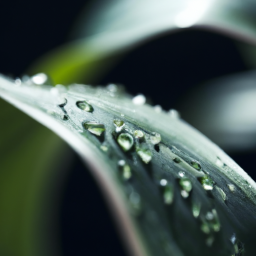
Creating a Sustainable Landscape: Planting for Efficient Water Usage
As concerns about water scarcity and environmental sustainability continue to grow, it is becoming increasingly important to create landscapes that are not only beautiful but also efficient in their water usage. By planting the right plants and implementing water-saving techniques, you can create a sustainable landscape that thrives while conserving water resources. In this article, we will guide you through the process of planting for efficient water usage, helping you create a landscape that is both eco-friendly and visually appealing.
Choosing the Right Plants
When it comes to creating a sustainable landscape, choosing the right plants is crucial. Native plants are an excellent choice as they are well adapted to local climate conditions and require less water compared to exotic species. Native plants also provide habitat for local wildlife, contributing to the overall biodiversity of your landscape.
Additionally, consider selecting plants with low water requirements. Drought-tolerant plants, such as succulents and cacti, are excellent choices for water-efficient landscaping. These plants have evolved to survive in arid conditions and can thrive with minimal water once established.
Furthermore, grouping plants with similar water needs together can help optimize water usage. By creating hydrozones, where plants with high water requirements are grouped separately from those with low water requirements, you can tailor your watering schedule to meet the specific needs of each zone, minimizing water waste.
Implementing Water-Saving Techniques
Aside from selecting the right plants, implementing water-saving techniques can significantly reduce water consumption in your landscape. Here are a few techniques to consider:
1. Mulching: Applying a layer of organic mulch around your plants helps retain soil moisture, suppresses weed growth, and moderates soil temperature. Mulching can reduce water evaporation from the soil surface and minimize the need for frequent watering.
2. Drip Irrigation: Drip irrigation systems deliver water directly to the plant’s root zone, minimizing water loss due to evaporation or runoff. This method is highly efficient and can reduce water usage by up to 50% compared to traditional sprinkler systems.
3. Rainwater Harvesting: Collecting rainwater in barrels or cisterns allows you to utilize natural rainfall for watering your landscape. Installing a rainwater harvesting system can help reduce your reliance on municipal water sources and provide a sustainable water supply for your plants.
Maintaining a Water-Efficient Landscape
Once you have established a water-efficient landscape, proper maintenance is crucial to ensure its long-term sustainability. Here are some tips for maintaining a water-efficient landscape:
1. Regular Monitoring: Regularly monitor your plants’ water needs and adjust your watering schedule accordingly. Avoid overwatering, as it can lead to root rot and other plant health issues.
2. Proper Pruning: Prune your plants regularly to remove dead or damaged branches, promoting healthy growth and water efficiency. Proper pruning also helps improve air circulation and reduces the risk of fungal diseases.
3. Soil Improvement: Enhance your soil’s water-holding capacity by adding organic matter, such as compost or well-rotted manure. Amending the soil with organic matter improves its structure, allowing it to retain moisture for longer periods.
By following these steps and implementing water-saving techniques, you can create a sustainable landscape that not only conserves water but also provides a beautiful and thriving environment for both you and local wildlife. Remember, small changes in your landscaping practices can make a significant difference in water conservation efforts and contribute to a more sustainable future.
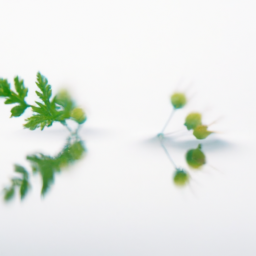
Native Plants: Promoting Water Conservation in Landscaping
Landscaping plays a crucial role in enhancing the beauty and functionality of our outdoor spaces. However, with increasing concerns about water scarcity and the need for sustainable practices, it is essential to adopt landscaping techniques that promote water conservation. One effective way to achieve this is by incorporating native plants into your landscape design. Native plants are species that naturally occur in a particular region and have adapted to the local climate, soil, and water conditions. In this article, we will explore the benefits of using native plants and provide you with a step-by-step guide on how to incorporate them into your landscape.
The Benefits of Native Plants
Native plants offer numerous advantages when it comes to water conservation in landscaping. Let’s take a closer look at some of these benefits:
1. Drought Resistance: Native plants have evolved to thrive in local conditions, including periods of drought. They have deep root systems that enable them to access water from lower soil layers, making them more resilient during dry spells. By incorporating native plants into your landscape, you can reduce the need for excessive watering and ensure the survival of your plants even in water-restricted environments.
2. Reduced Water Requirements: Compared to non-native plants, native species generally require less water once established. This is because they have adapted to the local climate and are accustomed to receiving water from natural rainfall patterns. By choosing native plants, you can significantly reduce your water consumption and contribute to water conservation efforts.
3. Ecosystem Support: Native plants provide essential resources for local wildlife, including food and habitat. By incorporating them into your landscape, you can create a thriving ecosystem that supports pollinators, birds, and other beneficial insects. This promotes biodiversity and contributes to the overall health of your garden.
Step-by-Step Guide to Incorporating Native Plants
Now that we understand the benefits of using native plants, let’s dive into the step-by-step process of incorporating them into your landscape:
1. Research Native Plants: Start by researching the native plant species that are well-suited to your region. Consider factors such as sunlight requirements, soil type, and water availability. Local nurseries, botanical gardens, and online resources can provide valuable information on native plant selections for your area.
2. Assess Your Landscape: Evaluate your landscape to determine the areas where you can incorporate native plants effectively. Consider factors such as soil conditions, existing vegetation, and available sunlight. Identify locations where native plants can thrive and complement the overall design of your outdoor space.
3. Prepare the Soil: Before planting native species, it is crucial to prepare the soil properly. Remove any weeds or unwanted vegetation from the planting area. Amend the soil with organic matter to improve its fertility and drainage. Native plants are adapted to local soil conditions, but providing them with a healthy growing environment will ensure their long-term success.
4. Select and Purchase Native Plants: Visit local nurseries or native plant sales to purchase the selected species. Ensure that the plants you choose are healthy and free from pests or diseases. Consider the mature size of the plants and their growth habits to ensure they fit well within your landscape design.
5. Planting and Maintenance: Dig holes for each plant, ensuring they are wide and deep enough to accommodate the root systems. Gently remove the plants from their containers, loosen the roots, and place them in the holes. Backfill with soil, firming it gently around the roots. Water the newly planted native plants thoroughly and add a layer of mulch to conserve moisture and suppress weed growth. Regularly monitor and water the plants as needed until they become established.
6. Monitor and Adjust: Keep a close eye on your newly planted native plants and make any necessary adjustments. Monitor their water needs, especially during the establishment period. Native plants generally require less water as they become established, but it’s essential to provide supplemental irrigation during dry spells. Remove any weeds or invasive plants that may compete with your native species.
7. Expand and Share: Once you have successfully incorporated native plants into your landscape, consider expanding their presence. Gradually replace non-native or water-intensive plants with additional native species. Share your knowledge and experience with others to promote the use of native plants and water conservation in landscaping within your community.
By following these steps, you can create a beautiful and sustainable landscape that promotes water conservation and supports local ecosystems. The use of native plants not only reduces water consumption but also enhances the natural beauty of your outdoor space. Start incorporating native plants today and make a positive impact on the environment.
Frequently Asked Questions (FAQ)
1. What are some plants that thrive in water?
Answer:
Some plants that thrive in water include water lilies, lotus plants, duckweed, water hyacinths, and water lettuce.
2. Can I grow plants in water alone?
Answer:
Yes, certain plants can be grown in water alone. These are known as hydroponic plants and they obtain all their required nutrients from water.
3. How do I care for plants that grow in water?
Answer:
To care for plants that grow in water, ensure they have enough light, change the water regularly to prevent stagnation, and provide appropriate nutrients if required.
4. Do water plants need soil?
Answer:
No, water plants do not require soil. They obtain all their nutrients directly from the water they are grown in.
5. Can I grow water plants indoors?
Answer:
Yes, many water plants can be grown indoors. You can use containers, fish tanks, or specially designed hydroponic systems to grow them indoors.
6. How often should I change the water for water plants?
Answer:
The frequency of water changes for water plants depends on various factors such as the size of the container, the number of plants, and the water quality. As a general guideline, aim to change the water every 1-2 weeks.
7. Can water plants be grown in ponds or natural bodies of water?
Answer:
Yes, water plants can be grown in ponds or natural bodies of water. However, it is important to choose plants that are suitable for the specific conditions and ecosystem of the water body.
8. Are there any benefits to growing water plants?
Answer:
Yes, growing water plants can provide several benefits such as improving water quality, providing habitat for aquatic organisms, reducing algae growth, and enhancing the overall aesthetics of the environment.
9. How do I propagate water plants?
Answer:
Water plants can be propagated through various methods such as division, cuttings, or by collecting and planting their seeds. The specific propagation method may vary depending on the plant species.
10. Are there any precautions I should take when growing water plants?
Answer:
When growing water plants, it is important to avoid introducing invasive species to natural water bodies, monitor water quality regularly, and ensure that the plants do not overcrowd the container or pond to maintain a balanced ecosystem.

James Wong is a renowned ethnobotanist, plant scientist, and local television presenter. With a passion for demystifying plant science, he is known for translating complex botanical concepts into practical advice for everyday plant enthusiasts. James’s expertise spans from traditional gardening to cutting-edge plant technologies, making his insights accessible and informative.


